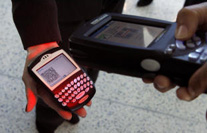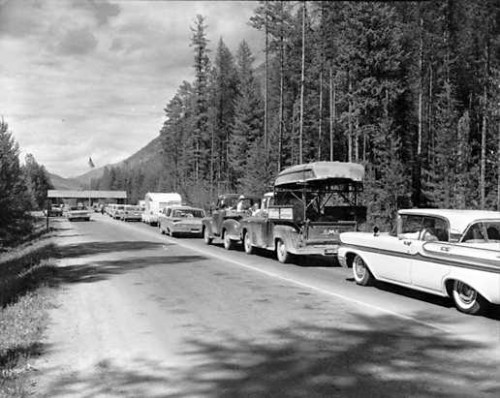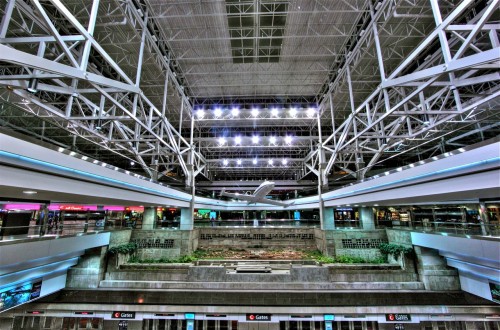We’ve all become accustomed to checking in for our flights on-line and printing out our boarding passes at home or at an airport kiosk on our way to the security checkpoint.
Now the TSA is working with five airlines and 70 airports to test paperless boarding passes.

Here’s how it works: When a traveler checks in on-line the airline emails a boarding pass in the form of a 2-D barcode that can be downloaded to a smartphone. The barcode on the phone can be scanned at the security checkpoint and by the airline gate agent; just like a paper pass.
It’s sound great, doesn’t it?
. But as I wrote in my most recent msnbc.com column – Going paperless: Tech-savvy air travelers on board – it’s probably not a good idea to disconnect your printer just yet. Electronic passes aren’t accepted everywhere. And they’re not fool-proof. “One of the first times I used one, my phone browser refreshed and I lost the boarding pass 30 seconds before boarding,” recalls Walter Hopgood, a frequent business traveler from Damascus, Oregon.
Path to paperless
Some airlines in Europe, Canada and Asia have been using paperless boarding passes since early 2007, but the United States has been behind the curve on adopting the new technology.
Why?
“We were slower to get Internet access on cell phones, slower to get affordable data plans on cell phones and slower than Europeans to start using cell phones for accessing data,” said Henry Harteveldt, a travel industry analyst for Forrester Research. But it’s also because the TSA has been very cautious, says Catherine Mayer, vice president of airport services at SITA, an information technology company serving the aviation industry. “The agency had additional security requirements it wanted airlines to meet before it would allow paperless boarding to be introduced here.”
Continental, the first airline to work up software to meet TSA’s authentication standards, kicked off the TSA’s pilot program for paperless boarding in December, 2007. Now the test program includes five U.S. airlines (Alaska, American, Continental, Delta and United), 71 domestic airports and Frankfurt Airport in Germany.
“Airlines are able to streamline the airport experience for passengers,” said Justin Taubman, the program manager for TSA’s mobile boarding pass program. “And the TSA is able to enhance the security of the boarding passes.”
Good to go?
While electronic boarding passes do save paper and time while heightening the TSA’s ability to detect fraudulent boarding passes, the pilot program is not glitch-free.
Some passengers encounter scanners with spent batteries or security-checkpoint staffers untrained or uninterested in the mobile pass pilot program. When Justin Meyer of Kansas City showed up at 5 a.m. at a Fort Lauderdale, Fla., security checkpoint armed with his electronic boarding pass, a TSA employee pressed him for paper. “I didn’t have it,” Meyer recalled, “so I had to wait about 10 minutes while they found the scanner and plugged it in.”
Other travelers have stored a paperless pass on a smartphone that has lost its charge. Or they’ve sailed through the TSA checkpoint paper-free, only to discover that an airline is using a gate without a scanner. Or they’ve discovered some airlines only deliver one paperless pass per smartphone — and that won’t work if you’re traveling with a family of four.
“Like any new technology or service, there needs to be a transition period when everyone is learning the way to proceed,” said Steve Lott of International Air Transport Association, an industry trade group. And so for now, notes Shashank Nigam of the airline consulting firm, Simpliflying, “Paperless boarding may very well remain an early adopter thing until all airlines and airports fall in line.”
That may not be too far off. TSA’s Justin Taubman says the agency is currently working with vendors to develop equipment for a new boarding pass scanning system. “Once the new Credential Authenticating Boarding Pass Scanning System, or CAT/BPSS, is in place,” he said, “the pilot project will become an official TSA program.”
And we’ll have to learn a new acronym.
You can read my original column – Going paperless: Tech-savvy air travelers on board – and see some reader comments – on msnbc.com.


